Invented by Myrtle S. POTTER, Individual
Predictive modeling involves using historical data, statistical algorithms, and machine learning techniques to forecast future outcomes. In the context of brand drugs, these models can help pharmaceutical companies identify strategies to enhance the value of their products and ensure long-term success.
One of the key areas where predictive models are being utilized is in pricing strategies. Determining the optimal price for a brand drug is a complex task that requires considering various factors such as market demand, competition, and reimbursement policies. Predictive models can analyze large datasets and provide insights on how different pricing scenarios would impact market share, revenue, and overall brand value. This allows companies to make informed decisions and optimize their pricing strategies accordingly.
Another important application of predictive modeling is in identifying potential risks and opportunities for brand drugs. By analyzing real-world data, including adverse events, patient outcomes, and market trends, these models can help companies proactively address safety concerns, optimize drug development processes, and identify new indications or patient populations that could benefit from their products. This not only increases the value of the brand drug but also improves patient outcomes and overall healthcare effectiveness.
Furthermore, predictive models can assist in optimizing marketing and promotional activities for brand drugs. By analyzing consumer behavior, social media trends, and physician prescribing patterns, these models can provide valuable insights on how to effectively target and engage key stakeholders. This enables pharmaceutical companies to develop targeted marketing campaigns, improve brand awareness, and ultimately increase the value and market share of their products.
The market for computer predictive models in the pharmaceutical industry is expected to witness significant growth in the coming years. According to a report by Grand View Research, the global predictive analytics market in healthcare is projected to reach $19.5 billion by 2025, driven by the increasing adoption of advanced analytics tools and the growing need for personalized medicine.
However, there are challenges that need to be addressed for the widespread adoption of predictive models in the pharmaceutical industry. Data privacy and security concerns, regulatory compliance, and the need for skilled data scientists are some of the key barriers that companies need to overcome.
In conclusion, the market for computer predictive models for methods and systems to increase and retain the value of brand drugs is expanding rapidly. These models offer pharmaceutical companies valuable insights into pricing strategies, risk assessment, and marketing optimization. As the industry continues to face evolving challenges, predictive modeling will play a crucial role in helping companies navigate the complex landscape and ensure the long-term success of their brand drugs.
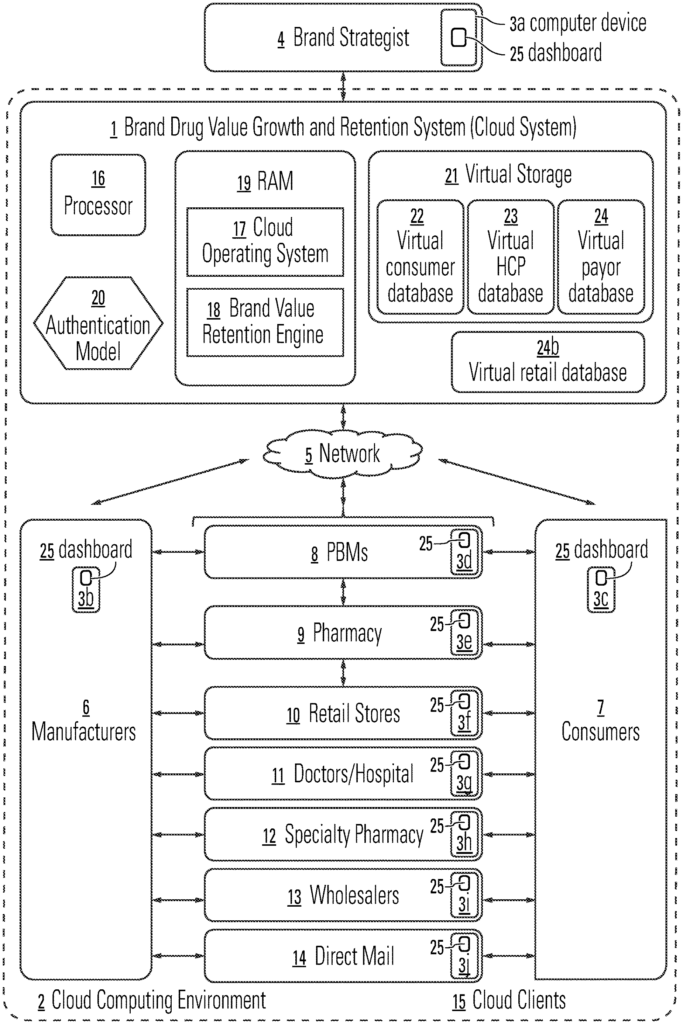
The Individual invention works as follows
The present invention is a system to increase and retain brand value for brand drugs that are commercialized by brand advertisers throughout the life cycle of a drug brand, both during exclusivity periods under patents as well as after exclusivity ends. The brand value retention and growth system analyzes data from consumer, healthcare provider, retailer and payer segments to create brand drug promotional campaigns with predictive parameters. The brand drug promotion campaign increases brand drug sales while predicting when incremental campaign investments will produce a decreasing number of incremental purchases.
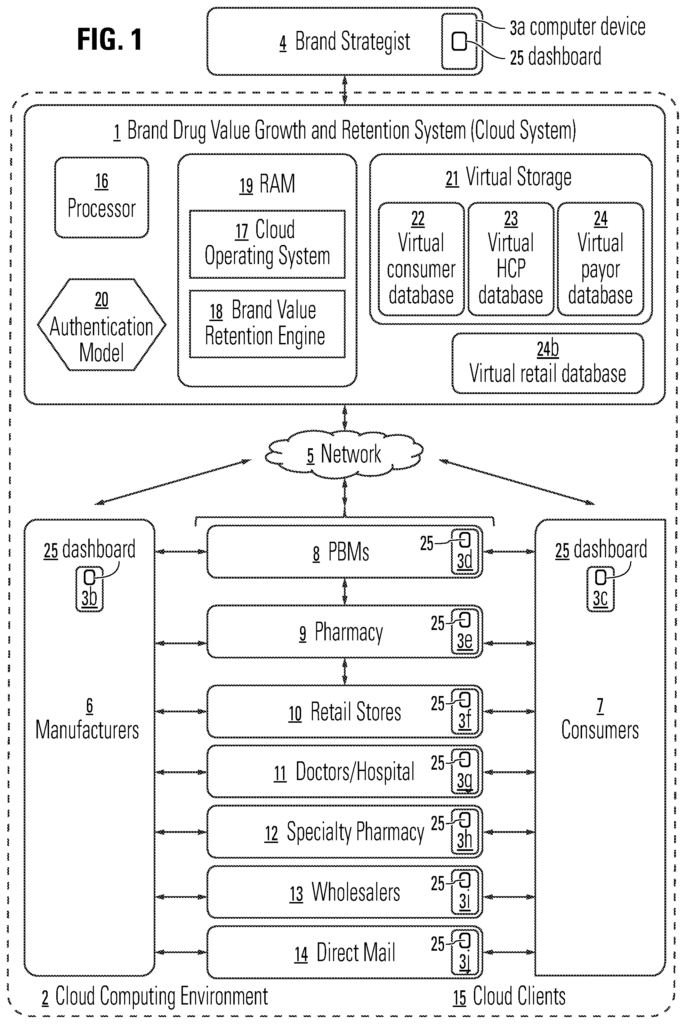
Background for Computer predictive model for methods and systems to increase and retain the value of brands drugs
Technical Field
The present invention is a generalization of process and optimization software and, more specifically, computer predictive models based on consumer, healthcare provider and retailer data, as well as pharmacy, payor and pharmacy segment data, to create a flexible and adaptive promotional campaign to grow and retain the value of brand drug during the life cycle of a particular drug, including the launch phase, the growth phase and the phase surrounding the loss of exclusivity.
Related Art
Brand drugs are the foundation upon which most brands drug advertisers can meet medical needs of consumers and generate profits and revenue during the life cycle of a brand. The lifecycle of a brand drug also coincides with the patent-defined period of exclusivity on the market. The brand drug’s market exclusivity period provides the brand with years of monopoly sales, but also a limited time for revenue and profits due to expiration of associated patents. Brand drug advertisers face the risk of significant revenue and profit losses as brand drug patents are about to expire.
Each and every year, billions in brand drug prices drop as generic manufacturers enter the market. They can offer the same or a similar drug for a much lower price. In the United States, it is estimated that $267 billion in brand drugs will lose exclusivity between 2010 and 2016. More than $50 billion worth of brands will be generic by the end of the next five years. The peak of a brand drug’s life cycle is often the moment when it loses exclusivity. This was the case with Singulair. Singulair’s annual sales were $3.3 billion at the time it lost exclusivity, making it Merck’s biggest-selling prescription drug. Singulair’s sales and profits dropped by 90% within four weeks after losing exclusivity. Brand drugs are estimated to have a brand share of less than 10% when they reach the post-exclusivity period.
Brand drug advertisers are known for investing billions of dollar to boost the sales of their brands. The combined costs of marketing, sales and promotion are far more expensive than any other expense for Brand drug advertisers. The lack of predictive methods for brand drug advertisers to apply to individual promotional decisions is a major challenge. This can lead to a failure to achieve the highest sales for brand drugs, while also predicting when massive investment in promotion will no longer yield incremental value. A real-time predictive system is needed that can combine the correlations between consumer, healthcare provider and retailer segment data to provide predictive value. This system will result in greater brand sales for brand drug marketers at lower costs. The growing pressure on healthcare costs can be a significant factor in the pharmaceutical industry. Methods such as the Brand Drug Value Growth and Retention System, as described below, could have a material and meaningful impact.
It is important to maintain and grow the value of brand drugs during the lifecycle of the brand, including the launch phase, the growth phase, and the phase surrounding the loss of exclusiveness. It would be desirable to use a predictive software model to create, refine, modify and transform one or more promotional campaign for increasing and retaining the brand drug value.
The methods, computer programs, and computer systems described herein are for increasing and retaining brand drug value by predictive computational modelling of consumer segment, healthcare provider segments, retailer segments, and payor segments data. This is done to generate a promotion campaign around a brand launch phase, a growth phase, or the loss of exclusivity. The engine for brand drug growth and retention consists of a financial model simulation module, consumer segments module and healthcare segments module. It also includes a promotional campaigns module and a module that prices manufacturer copay cards. The consumer segments module provides a computational model of consumer segments in order to determine the optimal promotional plan for an aimed consumer segment. The healthcare provider module provides a computational model of healthcare provider segments. Manufacturer PBM/payor Strategy Module and Manufacturer PBM/Payor Execution Module are configured to provide computational models of payor segments. The financial model simulation module is configured to accept the computational models of consumer segment, healthcare provider segment, and payor segment, and to execute a predictive model for promotional tactics in segments of consumers, healthcare providers, and payors.
A campaign is a combination segment promotional plans. The first set of segment plans are for launching to different consumer segments. Each segment plan contains one or more tactics profiles. Tactic profiles are used when a specific consumer segment responds to a promotional tactic. Each segment promotional plan contains one or more tactic profile. Tactic profiles are used when a segment of healthcare providers that can be grouped based on the behavior of healthcare providers responds well to a targeted promotional tactic. Payor segments are then introduced to a third set of segment promotion plans, each with one or more tactics profiles. “A tactic profile can be used when a specific healthcare provider segment that can be grouped based on the behavior of individual healthcare professionals responds well to a targeted promotional tactic.
The brand drug growth and retention engines includes a dashboard module that is configured to provide an interface for communicating data and controlling information between the engine and the master dashboard on the computer of the brand strategist. The dashboard is divided into sections to display consumer segment data as well as healthcare provider and payor segment information, as well the predictive modeling results of a recommended promotion campaign. The financial model simulator module can also provide alternative segment promotional plans when the current campaign is not optimal.
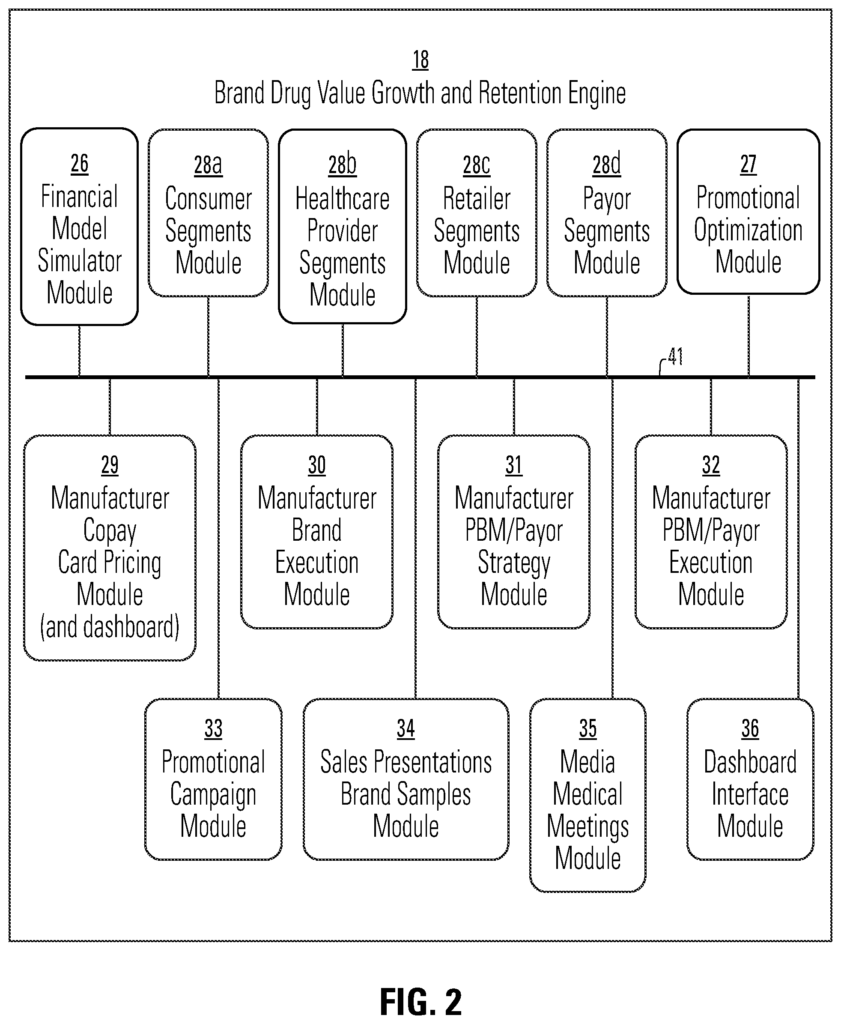
The method is described as follows: “Broadly stated a method of selecting a promotion campaign in the health industry. It comprises executing the first computational model using the data of consumer segments to determine the first substantially optimal mix of brand drug promotions for consumers who may be candidates for brand-name drugs; executing the second computational model using the data of healthcare provider segments to determine the second substantially optimal mix of brand drug promotions for healthcare providers that treat consumers who might be candidates for brand-name drugs; executing the third computational model with payor segments to determine the data segment to determine the payor segments to determine the payor segments to determine the payor segments to determine the payor segments to determine the
The present invention provides a predictive model that is effective in generating and optimizing promotional campaigns for brand drug advertisers. This helps them to increase and maintain the value of their brand drugs during the launch or growth of a new product or at the time of the patent expiration.
The detailed description of the invention below discloses the structures and methods. This summary is not intended to define the invention. The claims define the invention. “These and other features, aspects and advantages of the present invention will be better understood by referring to the following description and appended claims, as well as the accompanying drawings.
A description structural embodiments and methods for the present invention with reference to FIGS. 1-10 . The invention is not intended to be limited to the embodiments disclosed, but may be used with other features, elements and methods. “Like elements in different embodiments are often referred to by the same reference numbers.
The following definitions could apply to certain elements in some embodiments. These terms can also be further defined here.
Brand Drug?refers to any medication that is associated with a proprietary name and trade mark. It may also have patents which provide intellectual property and monopolistic protections.
Brand drug advertisers?Refers both to manufacturers and retailers.
Brand Samples are small amounts of brand drugs that are provided free by an advertiser to healthcare providers or to the consumer.
The term “Brand Strategist” refers to a person that monitors or directs monitoring of market trends and brand drugs and who oversees planning, management, and execution of brand analyses, pricing, contracting and advertising campaigns. They also ensure that the tactics are delivered to consumers, healthcare professionals and payers in order to achieve desired results. Brand strategists can be or not be employees of the manufacturer.
Computational Model” (also known as ‘computational modelling,’? ?computer model,? Or ‘computer modeling’? “refers to any software which models an external process, such as a marketing campaign.
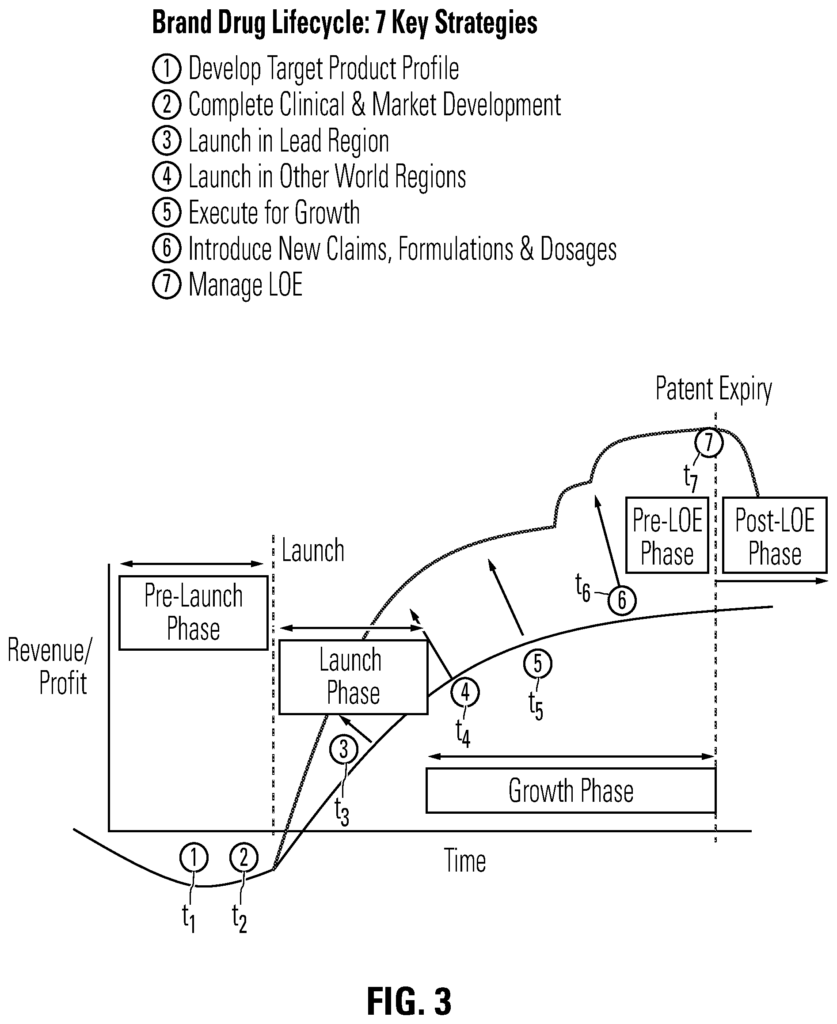
Consumer segmentation is the process of defining a homogenous large group of consumers that are using or are likely to use brand drugs, into groups with similar demographics and needs, wants, or demand characteristics. This allows for the creation of a segmented promotional plan which matches the expectations of the consumers. Within this population, the entire pool is divided into sub-regions and segments, which make up the geography. This embodiment is not meant to limit any of the different constructions of consumer segmentation. In California, for example, the state could be divided into 25 segments such as San Francisco Oakland San Diego Los Angeles Santa Barbara etc.
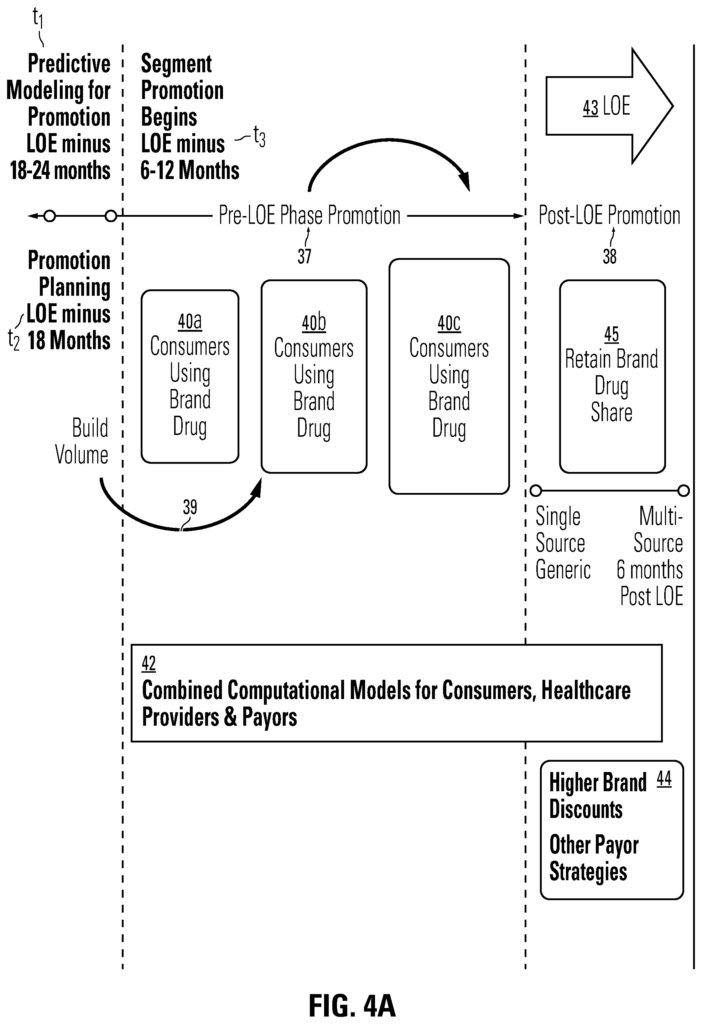
Click here to view the patent on Google Patents.
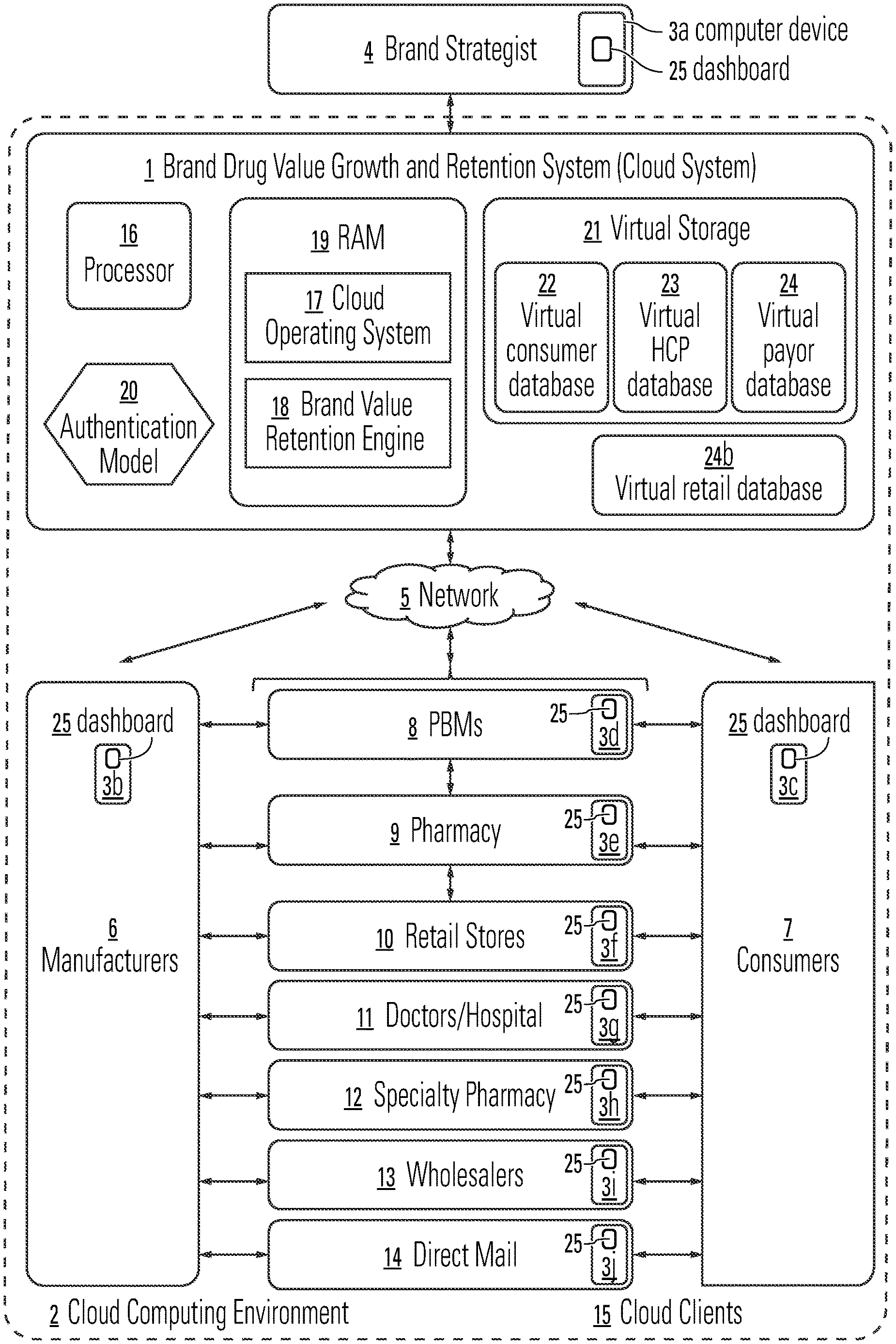
Leave a Reply